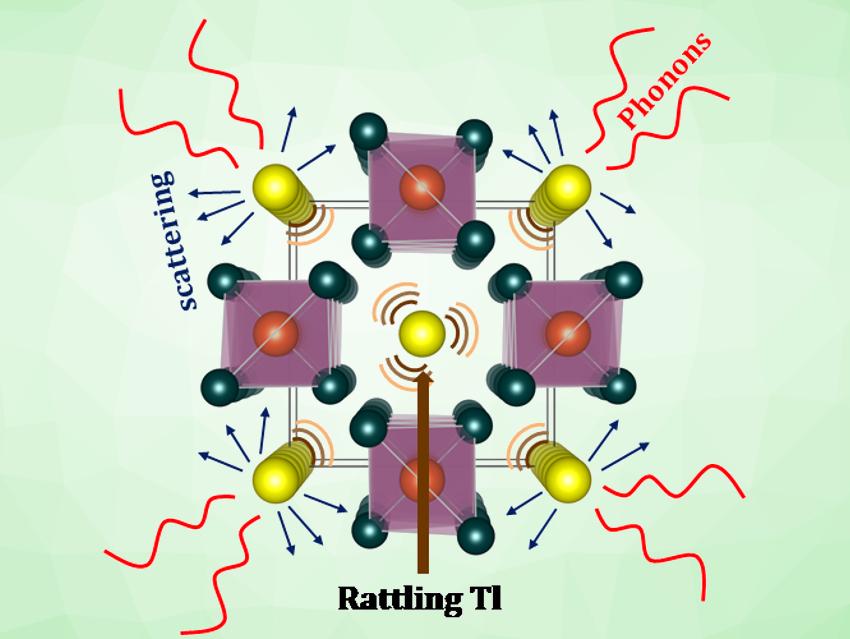Heat propagation is always connected to the structure of a material. For example, it varies significantly between crystalline and amorphous solids. The fundamentals of heat conduction can be traced back to the local chemical environment within a material.
Kanishka Biswas, Jawaharlal Nehru Centre for Advanced Scientific Research (JNCASR), Bangalore, India, and colleagues have uncovered the origin of the ultralow thermal conductivity of the Zintl compound TlInTe2. The team studied the local structure and phonon vibrations using synchrotron X‐ray pair distribution function (PDF) and inelastic neutron scattering (INS), respectively. They found direct evidence of an intrinsic, highly anharmonic “rattling” of Tl atoms inside a cage formed by [InTe2]n–n units (pictured), as well as a bonding hierarchy of interconnected covalent and ionic substructures in TlInTe2. These properties cause strong phonon scattering and diminish the thermal conduction in the highly crystalline material.
According to the researchers, these findings provide insight into the role of both local and global structure in heat transport. This could help to find new materials with intrinsically low thermal conductivity for applications such as thermoelectrics and thermal insulation.
- Evidence of Highly Anharmonic Soft Lattice Vibrations in Zintl Rattler,
Moinak Dutta, Manisha Samanta, Tanmoy Ghosh, David J Voneshen, Kanishka Biswas,
Angew. Chem. Int. Ed. 2020.
https://doi.org/10.1002/anie.202013923




